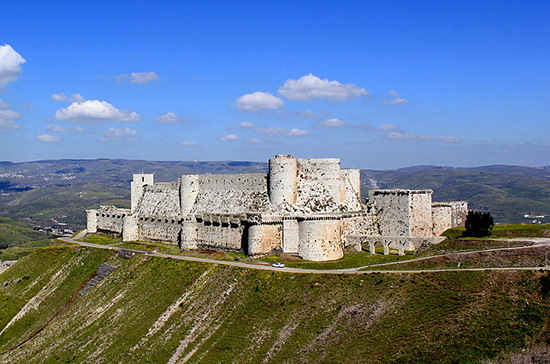Featured Author
 Scribe
Scribe
Aldarion submitted a new blog post:
Fantasy Fortifications — Part 1: Strategy
This article is part 1 of a series on Fantasy Fortifications by Toni Šušnjar

Fortifications are one of major parts of fantasy fiction, especially high fantasy. But they are also oh-so-often wrong, even though many basic details are typically right due to prevalence of models to build on. A common mistake is ignoring how weapons and fortifications interact: many fortifications in we-swim-in-gunpowder Warhammer look (and act) like fortifications from pre-gunpowder era. As seen here and here, extremely advanced Empire absolutely forgot to account for presence of siege cannons in designing its fortifications, despite possessing the same. In fact, those fortifications are from pre-trebuchet era. On the other extreme, Storm's End has a wall which reads like something from early gunpowder era (though it does have the excuse of having to resist storms), as well as being sized for giants.
Strategy
The main purpose of fortifications is to increase the cost of the attack, by providing the defender with a hard-to-get position. They therefore allow the defending army to maintain armed presence where such would be normally untenable, forcing the attacker to either deploy disproportionate...
Continue reading the Original Blog Post.
Fantasy Fortifications — Part 1: Strategy
This article is part 1 of a series on Fantasy Fortifications by Toni Šušnjar

Fortifications are one of major parts of fantasy fiction, especially high fantasy. But they are also oh-so-often wrong, even though many basic details are typically right due to prevalence of models to build on. A common mistake is ignoring how weapons and fortifications interact: many fortifications in we-swim-in-gunpowder Warhammer look (and act) like fortifications from pre-gunpowder era. As seen here and here, extremely advanced Empire absolutely forgot to account for presence of siege cannons in designing its fortifications, despite possessing the same. In fact, those fortifications are from pre-trebuchet era. On the other extreme, Storm's End has a wall which reads like something from early gunpowder era (though it does have the excuse of having to resist storms), as well as being sized for giants.
Strategy
The main purpose of fortifications is to increase the cost of the attack, by providing the defender with a hard-to-get position. They therefore allow the defending army to maintain armed presence where such would be normally untenable, forcing the attacker to either deploy disproportionate...
Continue reading the Original Blog Post.


 Maester
Maester Sage
Sage